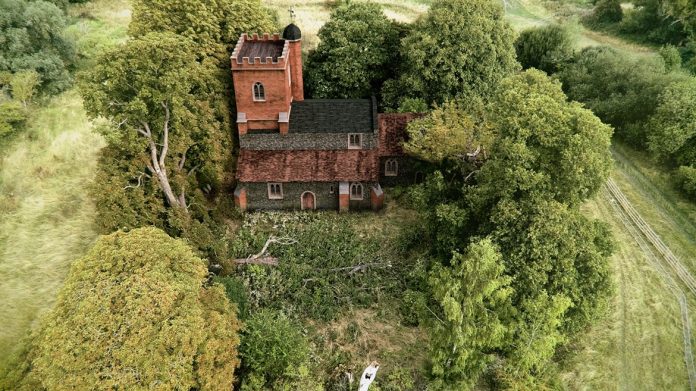Archaeologists working on the HS2 project have made a new discovery, uncovering what they believe to be the remains of an Anglo-Saxon church underneath the structure of the Norman church they were excavating
The archaeologists at St Mary’s Old Church, Stoke Mandeville, have found a structure that had survived to such an extent it was “truly remarkable”.
The site sits on the line of the new HS2 route and is being carefully investigated by a team from LP-Archaeology, working with HS2’s enabling works contractor, Fusion-JV.
Over the past few months, a team of over 40 archaeologists have been excavating and examining the Norman church and associated churchyard. The church structure was built on a light grey compacted foundation band laid by the Normans, so any archaeological deposits found below that band would be pre-Norman.
The team working at St Mary’s discovered flint walls forming a square structure underneath the Norman levels, enclosed by a circular boundary ditch, and a small number of associated burials. Archaeologists believe this to be an Anglo-Saxon church.
The church originally being excavated by HS2 archaeologists was St Mary’s Church in Stoke Mandeville which was built in 1080AD, very shortly after the Norman conquest.
A new church closer to the centre of the village was built in the 1880s, and at that point the Norman church fell into disrepair and in the 1960s the Royal Engineers were drafted in to pull it down.
The team have also been carefully excavating the buried population at the Old St Mary’s Churchyard, examining what life would have been like for a rural population who lived in the area over the period the Norman church was in use. Evidence for funerary practices such as when a plate of salt was placed on the deceased has been discovered. Similar finds were uncovered by HS2 archaeologists excavating a city burial site in Birmingham.
A further unusual find at St Mary’s was a ‘flea catcher’ found buried with a gentleman, next to his head. The ‘flea catcher’ was a small bone pot which would have contained a rag with blood on it, and a bit of honey. Fleas from the gentleman’s wig would have been attracted to the blood on the rag and would stick to the honey inside the pot.
Revealing more about Britain’s heritage
Helen Wass, HS2’s head of heritage, said: “Once again, our vast archaeology programme has given us the ability to reveal more about the history of Britain.
“The discovery of a pre-Norman church in Stoke Mandeville allows us to build a clearer picture of what the landscape of Buckinghamshire would have been like over 1000 years ago.
“All artefacts and human remains uncovered will be treated with dignity, care and respect and our discoveries will be shared with the community through open days and expert lectures.
“HS2’s archaeology programme seeks to engage with all communities both local and nationally to share the information and knowledge gained as well as leaving a lasting archival and skills legacy.”






![[VIDEO] HS2 completes 4,600-tonne viaduct slide across M6 The HS2 team completed a 17-hour long operation sliding the viaduct structure across the M6 without closing the motorway](https://www.pbctoday.co.uk/news/wp-content/uploads/2025/12/M6-South-viaduct-slide-taking-place-across-a-live-motorway-December-2025-218x150.jpg)







